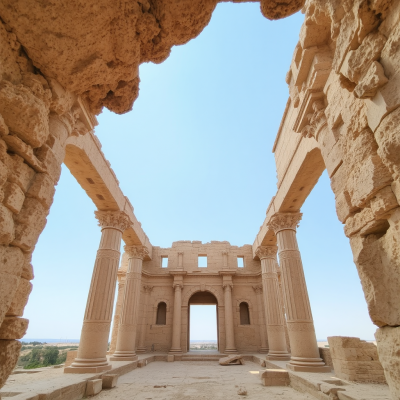Kingdoms and Monuments: The Ruins of Qart-hadasht (Tunisia)

Qart-Hadasht: The African Empire That Challenged Rome
The Rise of Qart-Hadasht
Qart-hadasht, nicknamed Carthage by Westerners, means “New City.” It was one of the most powerful civilizations of ancient Africa. Made famous in 814 B.C. by a Phoenician noble Princess Elyssa, also known as Didofrom Tyre, exiled and determined to build a new future on the North African coast.
While the Phoenicians established the city, they didn’t start from scratch. Local merchants and farmers already had a thriving settlement. Carthage quickly became a hub for trade. Gold from Senegal, tin from the Atlantic coast, and goods from Europe all passed through its bustling markets.
A Strategic Powerhouse
Qart-hadash sat on a prime spot between Sicily and North Africa, where Mediterranean ships converged. This gave Qart-hadasht enormous trade advantages, earning the city great wealth and power. As its influence spread, it caught the attention of rising empires, especially Rome and Greece.
The walls of the city, which stretched for 23 miles (37 km), were legendary; impenetrable and larger than those of any rival city. Qart-hadash had everything: a citadel called Byrsa, massive marketplaces, theatres, religious areas, and an advanced city layout. It was divided into four equal residential zones, each with carefully planned streets and housing.
Originally ruled by kings, Qart-hadash later adopted a unique system of governance. The suffetes, who were annually elected magistrates, ran the city. This early republic model would later inspire Roman consuls.
Hannibal and the Wars with Rome
At its peak, Qart-hadash’s empire stretched from Gades (modern Spain) to Carthago Nova, across the Balearic Islands, Sardinia, Corsica, Sicily, and deep into North Africa. This expansion alarmed Rome, igniting the brutal Punic Wars, a century-long conflict that changed history.
The First Punic War lasted 23 years. The Second Punic War, lasting 15 years, produced Qart-hadash’s most famous hero: Hannibal. He crossed the Alps with elephants, shocking Rome and winning key battles. His military brilliance ranks alongside Alexander the Great and Julius Caesar.
Despite Hannibal’s victories, the Third Punic War ended in 146 B.C., when Rome destroyed Qart-hadash, burned it to the ground, and sold its people into slavery.
A Legacy that Lives On
Qart-hadash’s fall didn’t erase its legacy. Its innovations in trade, governance, and warfare shaped the ancient world. Even centuries later, Qart-hadash remains a symbol of African strength and resilience.
In a symbolic gesture, Rome and Qart-hadash finally made peace in 1985. The mayors of both cities signed a treaty, more than 2,100 years after the last war ended.
Visiting Qart-hadash Today
Today, Qart-hadash’s ruins lie near Tunis, the capital of Tunisia. It’s a UNESCO World Heritage Site and a major tourist attraction. The ancient stones whisper stories of a forgotten empire that once stood toe-to-toe with Rome.
Visitors can walk through its historic remains, climb the Byrsa hill, see ancient ports, and imagine the power that once ruled the Mediterranean.
Today, Carthage is not just a ruin. it was a legend, a rival of Rome, and a beacon of African brilliance. Its echoes still shape the story of civilization.
Learn about more ancient kingdoms of Africa
